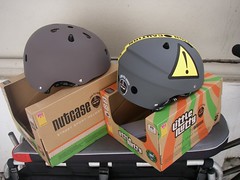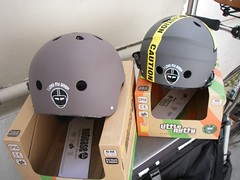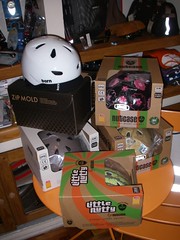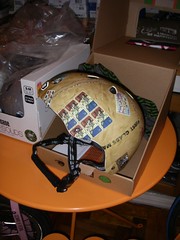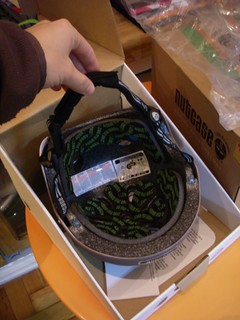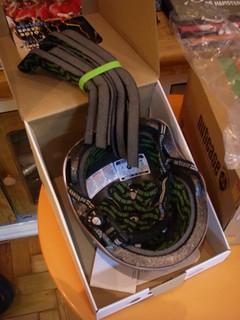Como seleccionar o tamanho adequado do seu capacete Nutcase
Usando uma fita métrica flexível (ex.: de papel ou daqueles dos kits de costura, evitar as fitas metálicas), meça a circunferência da sua cabela no seu ponto mais largo, cerca de 1.5 cm acima das sobrancelhas e das orelhas:
Certifique-se de que não há folga na fita, mas também que não fica muito apertada. Tire a medida pelo menos 3 vezes, para consistência. Se obtiver um valor diferente de cada vez, assuma a medida maior. A seguir compare a sua medida com a tabela abaixo e seleccione o tamanho de capacete adequado.
| Tamanho da cabeça (cm) | Tamanho do capacete |
| 52 |
S/M Small/Medium 52 cm – 60 cm |
| 53 | |
| 54 | |
| 55 | |
| 56 | |
| 57 | |
| 58 | |
| 59 | |
| 60 | |
| 61 |
L/XL Large / Extra Large 61 cm – 64 cm |
| 62 | |
| 63 | |
| 64 |
Se a sua medida calha entre tamanhos, escolha o tamanho maior.
Outra tabela com sugestões (ambas servem apenas para o ajudar a encontrar mais facilmente o seu tamanho, isto pode variar de pessoa para pessoa!):
Depois de determinado o tamanho mais adequado, certifique-se de que usa o capacete correctamente ajustado. Veja como aqui.
 A parte da frente do capacete deverá ficar logo acima das sobrancelhas e a parte de trás não deverá tocar no pescoço.
A parte da frente do capacete deverá ficar logo acima das sobrancelhas e a parte de trás não deverá tocar no pescoço.
As correias por baixo do maxilar deverão ficar justas mas não demasiado apertadas a ponto de causar desconforto ou estrangulamento. Aperte-as e tente fazer o capacete deslizar da sua cabeça – se a pele da sua testa se mover ligeiramente, tem um bom ajuste.
As correias de lado deverão ser ajustadas de modo a formar um triângulo em volta da orelha, com o vértice logo abaixo desta.
Importante: Não permita que uma criança use o capacete sem fazer previamente estes ajustes de correias e tamanho (usando os kits de espuma e/ou o Spin Dial, no caso dos Little Nutty).
Os capacetes Nutcase Street das colceções Super Solids e Graphics trazem incluído um conjunto extra de esponjas de diferentes espessuras, para lhe permitir afinar o tamanho/ajuste do capacete de forma mais exacta:
Os capacetes Nutcase estão certificados segundo estes padrões:
Saiba aqui o que diz o Código da Estrada quanto ao uso de capacete.
Encomende o seu Nutcase na nossa loja, colecções Graphics, Super Solids e Little Nutty.
